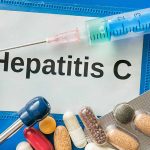[ad_1]
Contributed by: Priyaish Srivastava
What is hernia disease?
A hernia develops when an organ protrudes from the muscle or tissue wall that typically keeps it in place (the peritoneum). Only when the peritoneum has weaknesses that allow a bulge to develop, can the organs push through or herniate A hernia is most commonly located between the chest and hips, although it can also develop in the upper thigh and groin.
The hernia disease can cause mild to severe pain while resting or doing specific physical activities like walking or jogging. The lumps may go away while the individual is lying down or resting, but they might return when coughing. Although not all hernia diseases are life-threatening, when they become strangulated (their blood supply is cut off), they represent a significant risk to the body, increasing the probability of hernia surgery to remove them.
Hernia types
Inguinal hernia:
The most frequent form of hernia is an inguinal hernia, which affects more males than women. The inguinal canal in males carries blood vessels and sperm to the testicles, whereas the inguinal canal in women supports the womb. An inguinal hernia develops when muscles at the top of the inner thigh bulge into the crotch.
Femoral hernia:
A femoral hernia is less frequent than an inguinal hernia, and it primarily affects women in their older years. It’s a condition in which the fatty tissues of the organs protrude over the inner thigh beyond the peritoneum inside the groin.
Umbilical hernia:
An umbilical hernia occurs when a section of the intestine protrudes through the navel. This is a more frequent ailment in newborns.
Hiatal hernia
Hiatal hernia (also known as hiatus hernia) is a condition in which a small part of the upper abdomen protrudes into the chest via a hole in the diaphragm.
Incisional hernia:
An incisional hernia is a kind of hernia that develops as a result of incisional surgery. The tissue bulges out as a consequence of an injury to the abdomen that may have been inflicted by surgery.
Epigastric hernia:
When fatty tissue bulges from the abdominal region between the lower part of the breastbone and the navel, it is called an epigastric hernia.
Spigelian hernia:
A Spigelian hernia occurs when the intestine strains on the side of the abdominal muscles below the navel.
Diaphragmatic hernia:
Diaphragmatic hernia can develop as a result of a congenital defect. The syndrome occurs when the stomach intestines protrude into the chest through a diaphragmatic hole.
What causes a hernia?
A hernia can develop as a result of weak abdominal tissues. It might be present from birth or develop as the body ages. Hernia in men is more common than hernia in women.
The condition might also be triggered by pressure on the abdominal wall. Some of the causes behind this are as follows:
- A congenital condition
- Constant coughing
- Aging
- Abdominal damage due to injury or surgery
- Heavy weight lifting
- Multiple pregnancies
- Strain during bowel movement due to constipation
- Family history of hernia
- Obesity
- Smoking (weakens the tissues)
Symptoms of hernia
When lying down, a hernia may vanish, but it might resurface when coughing, laughing loudly, weeping, or straining during bowel motions. Some hernia symptoms in men and hernia symptoms in females may be common.
The following symptoms may appear due to hernia:
- Swelling scrotum in men
- Burning sensations at the bulge
- Abdominal discomfort while lifting weight and bending
- Heartburn
- Progressive pain
- Nausea
- Constipation
Diagnosis of hernia
If a person has any of the above symptoms of a hernia, it is recommended that they have it diagnosed as soon as possible. Ignoring the signs can lead to greater pain and a fast increase in the size of the hernia. The condition of a hernia is frequently detected by a doctor performing a physical examination around the skin where the intestine bulges out and causes discomfort. In the event of an inguinal hernia, the doctor may instruct you to cough while standing in order to acquire a clear view of the hernia. An ultrasound examination may be conducted to diagnose a femoral hernia.
Hernia treatment:
An inguinal hernia may be healed without surgery if caught early enough. It just takes a team effort from both the doctor and the patient. To proceed with this treatment, the doctor may ask the patient to lie down on his or her back. If the doctor is unable to return the overgrown hernia to its original location in the abdomen, they will refer you to a gynecologist or a surgeon. Hence, hernia surgery would be recommended to cure the condition
Types of hernia surgery
Open surgery:
By creating a slit in the abdomen at the site of the hernia, the bulging tissue is forced back into the peritoneum. In addition, the tissue wall is sewn together.
Laparoscopic surgery:
Laparoscopic surgery for hernia treatment involves injecting the patient with general anesthesia and making small incisions on the abdomen’s surface. The surgeon inserts a laparoscope (a fiber tube with a small camera and light) through one incision and surgical instruments through another incision to complete the surgery. The doctor can execute the surgery with a clear view of the hernia’s site, thanks to laparoscopy.
Book The Healthy Stomach Package Today
This post has already been read 11 times!
[ad_2]
Source link



